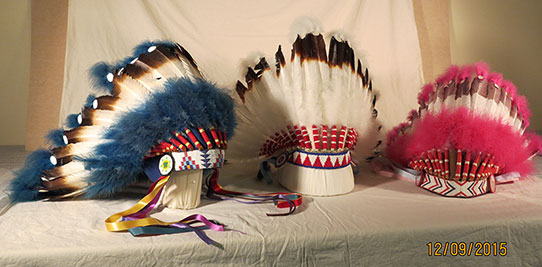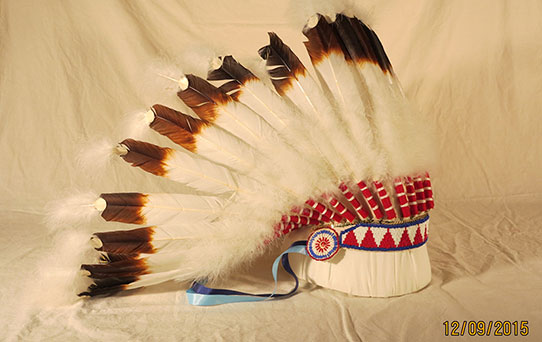The Museum Division was recently contacted about a potential donation involving seven Native American headdresses. The donor’s husband had been the funeral director for a funeral home in Garrison, ND, for forty years. The headdresses were given to him as thank you gifts from the families of the deceased.

Because these headdresses are excellent examples of contemporary Native American regalia (of which the State Historical Society has very few), our Museum Collections Committee decided to accept all of them. However, since Native American headdresses from the Northern Plains often include eagle feathers, we needed to consider the Bald and Golden Eagle Protection Act of 1940. In a nutshell, this Federal law states that it is illegal to be in possession of any part of a bald or golden eagle unless you have a permit, or unless the eagle was collected before the legislation was enacted. If you are in possession of a bald eagle or parts of a bald eagle, you need to have proof of ownership prior to1940. If you are in possession of a golden eagle or parts of a golden eagle, you need to have proof of ownership prior to 1962.

In this case, the donor of the seven headdresses did not know for sure whether they contained eagle feathers, nor did she know from whom the headdresses came. Without a clear provenance (history of ownership) we knew the U.S. Fish and Wildlife Service’s Migratory Bird Permit Office would not grant us an exhibition permit for any of the headdresses containing eagle parts, including feathers. Special Agent Kevin Downs of the U.S. Fish and Wildlife Service was contacted to identify the feathers in the headdresses by reviewing photographs from the donor. Based on the photos, he believed only one of the headdresses contained real eagle feathers, while the others were probably painted or dyed to have the appearance of immature golden eagle tail feathers (white feathers with black tips). In light of his findings, we requested that Special Agent Downs be present when the donor delivered the headdresses to the North Dakota Heritage Center & State Museum for an official positive identification of eagle parts.

Downs was able to determine that six of the seven headdresses were likely made of dyed turkey feathers, and one was made from immature bald eagle feathers. The Museum Division happily accepted the six non-eagle headdresses into the collections. The donor decided to surrender the headdress containing eagle feathers to the U.S. Fish and Wildlife Service. It will be sent to the Eagle Repository in Denver, CO, http://www.fws.gov/eaglerepository/. The feathers will be redistributed pursuant to their policies.
Complying with federal regulations such as the Bald and Golden Eagle Protection Act is just one of the things the Museum Collections Committee takes into consideration before accepting artifacts into the Museum Division’s collection.

